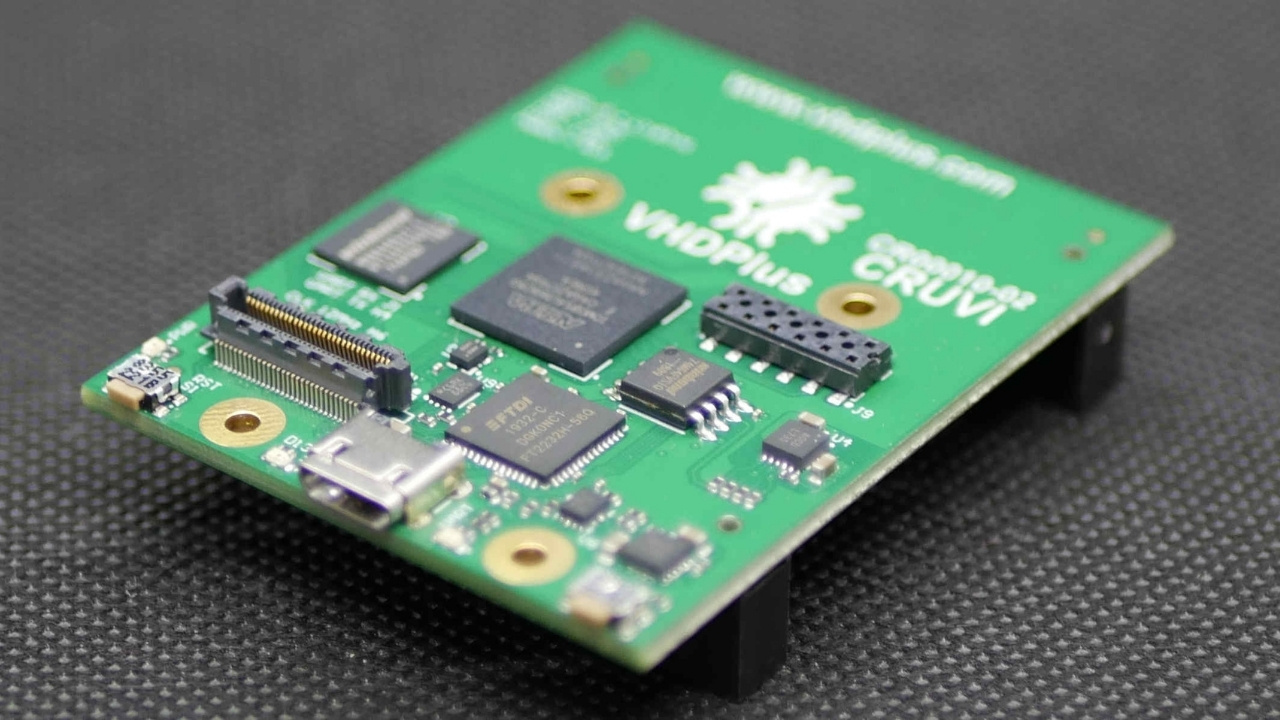
What is an FPGA programmer? An FPGA programmer is a specialist who configures Field-Programmable Gate Arrays (FPGAs). These are integrated circuits designed to be configured by the customer after manufacturing. Unlike traditional processors, FPGAs can be customized for specific tasks, making them highly versatile. FPGA programmers use hardware description languages (HDLs) like VHDL or Verilog to write code that defines how the FPGA will operate. This role requires a mix of software and hardware skills, as well as a deep understanding of digital logic. FPGA programming is crucial in fields like telecommunications, aerospace, and consumer electronics, where custom hardware solutions are often needed.
What is an FPGA Programmer?
An FPGA (Field-Programmable Gate Array) programmer is a device or software used to configure FPGAs. These chips are highly versatile and can be programmed to perform a wide range of tasks. Here are some fascinating facts about FPGA programmers.
-
FPGA stands for Field-Programmable Gate Array. These chips can be programmed after manufacturing, making them highly adaptable.
-
FPGAs are used in various industries. From telecommunications to automotive, these chips find applications in many fields.
-
They offer parallel processing capabilities. Unlike traditional CPUs, FPGAs can handle multiple tasks simultaneously.
-
FPGAs are reconfigurable. This means they can be programmed, erased, and reprogrammed multiple times.
-
They are used in high-frequency trading. Financial firms use FPGAs for their speed and efficiency in executing trades.
How FPGA Programmers Work
Understanding how FPGA programmers work can be quite intriguing. These devices or software tools are essential for configuring the FPGA chips.
-
FPGA programming involves hardware description languages (HDLs). VHDL and Verilog are the most commonly used HDLs.
-
The programming process starts with design entry. Engineers use HDLs to describe the desired circuit behavior.
-
Simulation is a crucial step. Before programming the FPGA, the design is simulated to ensure it works as intended.
-
Synthesis converts HDL code into a netlist. This netlist represents the circuit in terms of logic gates and connections.
-
Place and route is the final step. The netlist is mapped onto the FPGA's physical resources, and the design is then programmed into the chip.
Benefits of Using FPGA Programmers
FPGA programmers offer numerous advantages, making them a popular choice for various applications.
-
They provide high performance. FPGAs can outperform CPUs and GPUs in specific tasks due to their parallel processing capabilities.
-
Low latency is a significant benefit. FPGAs can process data with minimal delay, which is crucial for real-time applications.
-
They offer flexibility. FPGAs can be reprogrammed to adapt to changing requirements or to fix bugs.
-
Energy efficiency is another advantage. FPGAs can be more power-efficient than traditional processors for certain tasks.
-
They support custom hardware acceleration. Engineers can design custom accelerators to speed up specific tasks.
Challenges in FPGA Programming
Despite their benefits, FPGA programming comes with its own set of challenges.
-
The learning curve is steep. Mastering HDLs and FPGA design tools requires significant time and effort.
-
Debugging can be difficult. Identifying and fixing issues in FPGA designs can be more complex than in software development.
-
Resource constraints are a concern. FPGAs have limited logic elements and memory, which can restrict design complexity.
-
Long development cycles. Designing and testing FPGA-based systems can take longer compared to software development.
-
Cost can be a barrier. High-end FPGAs and development tools can be expensive, making them less accessible for small projects.
Real-World Applications of FPGA Programmers
FPGA programmers are used in a variety of real-world applications, showcasing their versatility.
-
Telecommunications rely on FPGAs. They are used in base stations, routers, and other networking equipment.
-
Automotive industry uses FPGAs. They are found in advanced driver-assistance systems (ADAS) and infotainment systems.
-
Aerospace and defense sectors utilize FPGAs. These chips are used in radar systems, avionics, and satellite communications.
-
Medical devices incorporate FPGAs. They are used in imaging systems, patient monitoring, and diagnostic equipment.
-
Consumer electronics benefit from FPGAs. They are found in gaming consoles, smart TVs, and other gadgets.
Future Trends in FPGA Programming
The future of FPGA programming looks promising, with several exciting trends on the horizon.
-
AI and machine learning integration. FPGAs are increasingly used to accelerate AI and machine learning algorithms.
-
5G technology will benefit from FPGAs. These chips will play a crucial role in the deployment of 5G networks.
-
Edge computing will leverage FPGAs. They offer the performance and efficiency needed for edge computing applications.
-
Open-source FPGA tools are emerging. These tools make FPGA programming more accessible to a broader audience.
-
Quantum computing and FPGAs. Researchers are exploring the use of FPGAs in quantum computing systems.
The Final Word on FPGA Programmers
FPGA programmers are game-changers in tech. They offer flexibility, speed, and power efficiency. From custom hardware designs to real-time data processing, these devices are versatile. They’re used in telecommunications, automotive systems, and even space exploration. Learning to program FPGAs can open doors to exciting career opportunities.
Understanding the basics, like HDL languages and logic gates, is crucial. But don’t worry, plenty of resources are available to help you get started. Whether you’re a student, a hobbyist, or a professional, diving into FPGA programming can be incredibly rewarding.
So, if you’re looking to expand your tech skills or innovate in your field, consider exploring FPGA programming. It’s a fascinating area with endless possibilities. Happy coding!
Was this page helpful?
Our commitment to delivering trustworthy and engaging content is at the heart of what we do. Each fact on our site is contributed by real users like you, bringing a wealth of diverse insights and information. To ensure the highest standards of accuracy and reliability, our dedicated editors meticulously review each submission. This process guarantees that the facts we share are not only fascinating but also credible. Trust in our commitment to quality and authenticity as you explore and learn with us.
